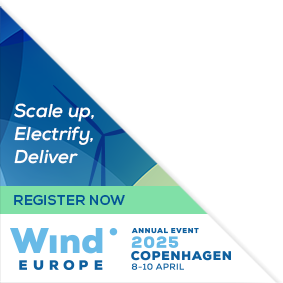Posters
Siblings:
ProceedingsProgrammeSpeakersPostersContent PartnersPowering the FutureMarkets TheatreResearch & Innovation in actionStudent programmePresenters dashboardCome meet the poster presenters to ask them questions and discuss their work
We would like to invite you to come and see the posters at our upcoming conference. The posters will showcase a diverse range of research topics, and will give delegates an opportunity to engage with the authors and learn more about their work. Whether you are a seasoned researcher or simply curious about the latest developments in your field, we believe that the posters will offer something of interest to everyone. So please join us at the conference and take advantage of this opportunity to learn and engage with your peers in the academic community. We look forward to seeing you there!
PO224: Large Scale Loop Thermosyphons for Fully Passive Cooling of Wind Turbines
Devin Pellicone, Engineering Manager, Product Development, Advanced Cooling Technologies, Inc
Abstract
Many terrestrial wind turbines use a transmission between the input shaft and the generator to control rotor speeds and generator frequencies. The simplest designs use of an internal pump in the transmission to circulate the transmission fluid directly to a radiator on top of the nacelle where it would be cooled by the wind powering the turbine. However, due to potential environmental impact concerns, the transmission fluid must be contained within the nacelle. A predecessor solution to the current design uses a liquid-to-liquid heat exchanger to transfer the heat from the transmission fluid to a glycol water loop which is then pumped to a radiator on top of the nacelle. This design required a secondary pump on the transmission fluid side to increase flow through the heat exchanger and another pump on the glycol water loop. Both consumed parasitic power from the generator output decreasing the efficiency. The innovative system discussed in this paper uses a 75 kWth Loop Thermosyphon to passively transfer the heat form the transmission fluid to a free air-cooled condenser on top of the nacelle. This design eliminates a second transmission fluid pump, and a pump on the glycol water loop which reduces capital costs, decreases parasitic loads, improves reliability, and reduces maintenance. Loop Thermosyphons (LTS) operate much like the steam heating systems in older houses and buildings. An evaporator sits at the lowest point in the system and generates vapor. The vapor flows upward towards a condenser where it condenses transferring heat to the ambient air. The condensate collects in the bottom of the condenser and flows by gravity back to the evaporator. This paper discusses the operating principles and design equations for predicting LTS operation and the benefits of LTS cooling for wind turbines.










